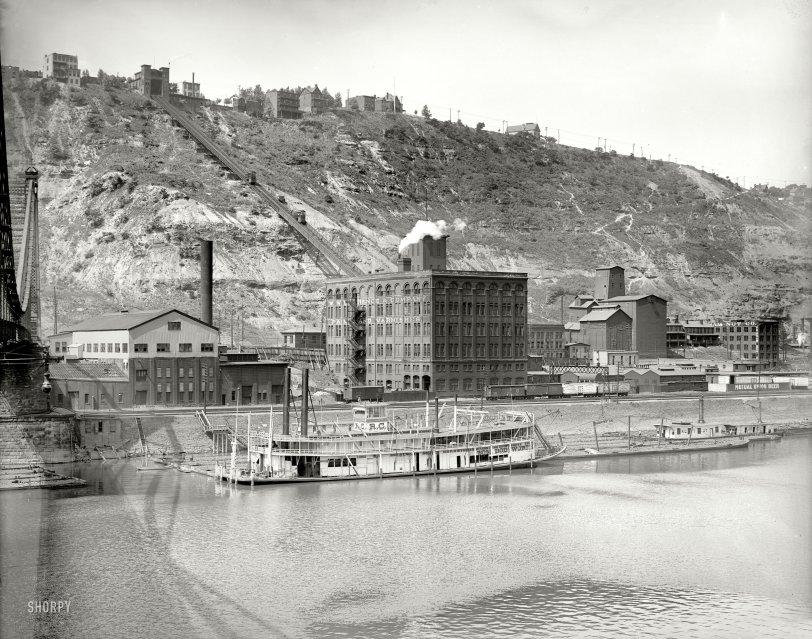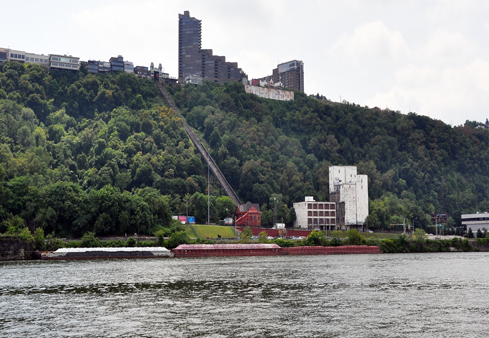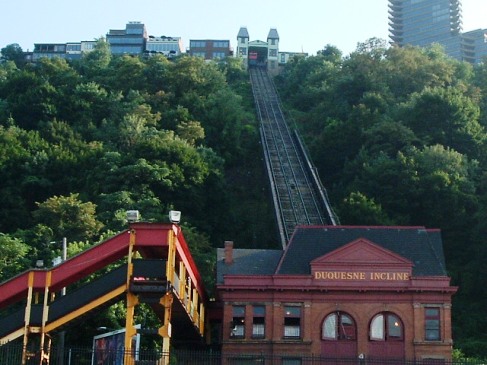


Framed or unframed, desk size to sofa size, printed by us in Arizona and Alabama since 2007. Explore now.
Shorpy is funded by you. Patreon contributors get an ad-free experience.
Learn more.

- Details, Details
- What's that building to the left of the tower?
- Coal Barges
- Bromo-Seltzer
- Inner harbor
- The Basin
- What a headache!
- Giant stepladder?
- Baldwin 62303
- Baldwin VO-1000
- Cold
- No expense spared
- Tough Guys
- Lost in Toyland
- And without gloves
- If I were a blindfolded time traveler
- Smoke Consumer Also Cooks
- Oh that stove!
- Possibly still there?
- What?!?
- $100 Reward
- Freeze Frame
- Texas Flyer wanted
- Just a Year Too Soon
- WWII -- Replacing men with women at the railroad crossing.
- Yes, Icing
- You kids drive me nuts!
- NOT An Easy Job
- I wonder
- Just add window boxes
Print Emporium
Duquesne Incline: 1900

Pittsburgh, Pennsylvania, circa 1900-1910. "Duquesne Incline Railway." Mount Washington and the Ohio River feature in this view, which includes the Point Bridge, a paint and varnish factory, a riverboat and the Graham Nut Company. 8x10 inch dry plate glass negative, Detroit Publishing Company. View full size.
+111
Below is the same view from July of 2011.

Lawrence Paint Building
That beautiful building isn't there any longer? What a shame. Seems like it would be prime loft space nowadays with such a picturesque view. My first (and only) visit to the downtown area was in '95 and we took the incline. I was very impressed with all of Pittsburgh.
The 19 inclines
Here are the locations of the 19 inclines of Pittsburgh. Click on them to see they names. Zoom to see the exact location of their tracks.
Safety
I don't know about incidents at the Pittsburgh inclines, but there were a few accidents on the ones in Cincinnati. Since the two cars counterbalanced each other, if the cables snapped then both cars would fall to the bottom. That happened on the Main Street Incline in Cincinnati, when one car reached the top the cable pulled out of the front of the car and it plummeted to the bottom, killing many patrons. Since the other car was already at the bottom it was mostly unscathed. That said, extra cables and other safety measure were installed, and they tended to operate very safely and quietly overall.
Car safety
Were these cars pretty safe as far as reliable brakes and/or safety brakes? Was there ever a incident of them failing, to anyone's knowledge?
Ironsides
I'm pretty sure that the white top floor is sheathed in sheet metal.
Hoppin' Tom
The Tom Dodsworth was a 182', 500 ton steamer built in Pittsburgh in 1871. She was called the "Hoppin' Tom" after setting a record time for the round trip between Pittsburgh and Cincinnati. On Dec 2 1900 she was involved in a collision with the steamer "Volunteer" near Swan Creek, Ohio resulting in the the sinking of 22 coal barges. Perhaps the photo was taken during repairs after the wreck. Dismantled circa 1924, her boilers were repurposed to construct road culverts in Pleasant County, W.Va.
Reports of the Department of Commerce and Labor, 1909March 24 (1907).—Steamer Tom Dodsworth, while ascending the Ohio River near Moundsville, W. Va., with an empty tow of coal boats and barges, broke her port wrist in crank, after cylinder head, bent piston rod close to piston head, and threw pitman crosshead and piston overboard. No other damage done, and no one hurt. Estimated damage, $500.
Coal Age, Vol 7., 1915The steamers "Thomas Dodsworth" and "F. M. Wallace," of the Monongahela River Consolidated Coal & Coke Co. cleared for Louisville Feb. 27 with tows of coal totaling about 1,200,000 bushels, also two freight barges each carrying 1400 tons of manufactured iron and steel.
Not there anymore
is the Lawrence paint building. It had stood abandoned for many years and was finally torn down 2 or 3 years ago. Also not there any more are the barren hillsides lining the shores of Pittsburgh's three rivers. I believe this is a direct result of the closure of all but a few steel mills and the pollution abatement efforts for those that remain.
View of downtown from the Duquesne Incline
Taken just a week and a half ago. After posting the photo on my facebook page a friend referenced this post by Dave. Shorpy is one of my favorite sites!!

Interesting
I'm wondering what is the white material that was used for sheathing the upper floor of that industrial building on the left. Looks like fabric.
Lost opportunity
I lived in Pittsburgh for nearly two years, and never made time to go up one of the inclines.
And I was as close as that bridge. On weekends I'd unwind by driving around the city in my Civic, crossing back and forth on the bridges and checking out the odd little neighborhoods.
Really cool picture, Kilroy. I'm pretty sure that those buildings up top weren't there in 1997. Especially that modern one at top right. I bet the great big empty expanses that lined the south shore of the Monongahela have been built up since then.
Up the creek
... without a paddlewheel. Maybe removed to replace the paddles. The antlers on the pilot house indicate that the Tom Dodsworth won a steamboat race. This is an Ohio River sternwheel tow boat, small towing knees can be seen on the bow. Probably used in the coal industry.
Gone Green
I'm amazed at the desert like conditions on the hillside. Maybe clear cutting to make it easier for development?
Isn't this also referred to as a vernacular railway? Or is that part of someone's vernacular?
[Maybe you're thinking of "funicular." - Dave]
A lot of this is still there
Including the incline itself, and Lawrence paint & varnish. In fact I remember the lettering was readable the last time I paid any attention to it. The odd-shaped building (a grain elevator, maybe for the brewery?) is gone, but I think the Nuts building is still there, too.
Of course this is one of the two inclines preserved in Pittsburgh, and it's a great trip.
Improvement!
This is one of the few scenic photos on Shorpy where the view has markedly improved since it was taken. In fact, Pittsburgh is a much more beautiful city now, too.

























On Shorpy:
Today’s Top 5